#marcher graffiti
Text
by Phyllis Chesler
The bands that rove our streets are hunting Jews, pogrom-style, but they are also hoping to make the evening news. The surging mobs are wearing masks and sporting Palestinian style keffiyehs. They are knowingly imitating Hamas terrorists, as they disrupt traffic on bridges, deface libraries, glue themselves to the ground during an American holiday parade; mob or “flood” our major train stations; occupy American landmark sites; rally in the outer boroughs, jump on buses, unfurl Palestinian flags; deface subway seats, buses, and storefronts with anti-Jewish graffiti; and attack Jewish-American students and teachers in schools.
Just last night, these pro-Palestinian “swarmers” tried to derail the annual Rockefeller Center Christmas tree lighting. Although one jihadist carried a Nazi swastika, the mob cursed the police as “f–king Nazis.”
None of these protests in America have called for the return of the Israeli hostages– or condemned the rape of Israeli girls and women on October 7.
These American jihadists appear to be civilians– just like Hamas terrorists. They wear no official military uniforms. Like Hamas, they disappear into the shadows.
These agitators are very much like the Chinese Communist Young Guards, Hitler’s brown shirts, African Islamist paramilitary gangs, the swarms of violent Black Lives Matter and American Marxist (antifa) demonstrators.
Across America, today’s masked marchers have attacked small businesses, houses of worship, disrupted mass transportation, and attacked visible or suspected Jews.They have defaced and occupied public spaces and made everyone, not only Jews, feel endangered in their own cities.
47 notes
·
View notes
Text
The Forrester home is more than half dugout, these days; the original deep root cellar has been extended irregularly during periods of intense fighting. There is always a faint scent of the good Marcher earth they will all return to in the home as it cradles them.
Yarrow’s bedroom is a little cubby around a deep-set window camouflaged by carefully-constructed shutters and tall “weeds”; they get light, air, and a surprisingly good view of what is going on outside without being obvious to observers.
A wooden frame is filled with fragrant hay and dried grasses and piled high with quilts stuffed with plant downs and wool - they get cold easily and it makes their pain worse.
They usually have at least one of the family dogs, cats, or orphan goats or piglets cuddled in with them for extra warmth, adding a warm animal scent to that of summers and sunlight.
Shelves are build into the frame, crowded with some printed texts and a great many handwritten manuscripts handed down through the family on a variety of subjects, though beekeeping, medicine, alchemy and winter magic predominate. Candlemaking equipment, inks and quills, and various medicinals jostle with them for space. A few hold clothing in various states of repair or construction and embroidery, knitting and macrame projects.
The frame is covered in generations of graffiti; names, some with hearts, some of those scored through deeply; calculations and charts, sketches of animals and plants in pencil or knife strokes.
2 notes
·
View notes
Photo

Mardi 7 mars 2023
Marseille.
La lumière toujours. Le quartier du Panier encore. J’aime me promener, marcher le long de ces ruelles sinueuses et étroites, monter, descendre, regarder les murs vivants de graffitis qui égayent Marseille, sorte de langage qui a remplacé l’accent à la Pagnol qui se fait de plus en plus rare, hymne au passé que l’on revoit au cinéma avec le pont transbordeur qui traversait le vieux port un jour bouché par une sardine égarée.
« Le pont transbordeur de Marseille, inauguré en 1905 et détruit en 1944 par les nazis, était un ouvrage de franchissement du Vieux-Port de Marseille construit par l’architecte Ferdinand Arnodin. Depuis 2008, l’architecte nantais Paul Poirier tente de relancer un nouveau projet de pont…une véritable rue aérienne. Un projet qui ne verra finalement jamais le jour et ne séduira pas vraiment les marseillais même les plus nostalgiques. Quant aux derniers vestiges du pont transbordeur ? ils ont été transformés en bancs et jardinières au Frioul ! »
Source : https://tourisme-marseille.com/fiche/le-pont-transbordeur-du-vieux-port-de-marseille-nouveau-projet-et-vestiges/
6 notes
·
View notes
Text

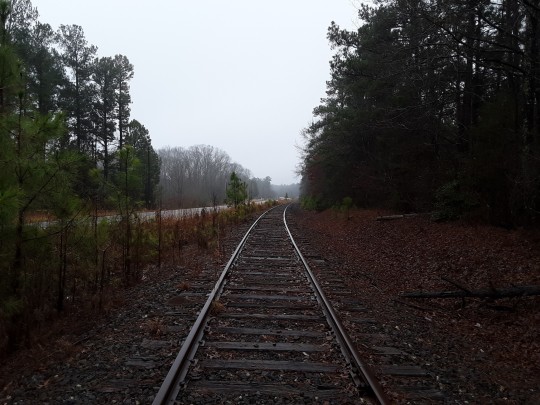
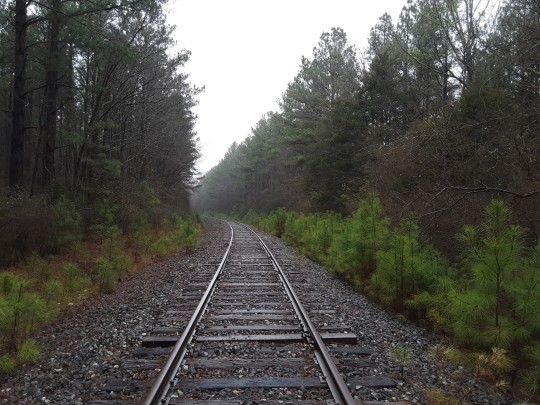
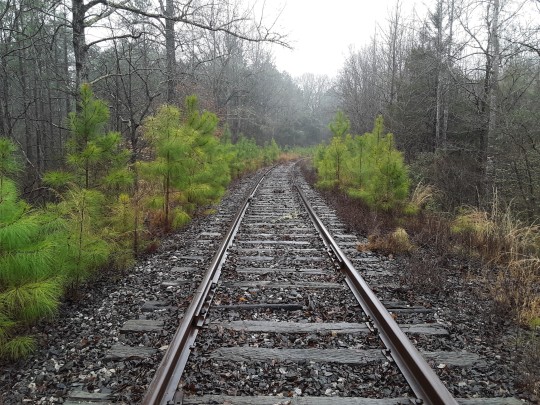
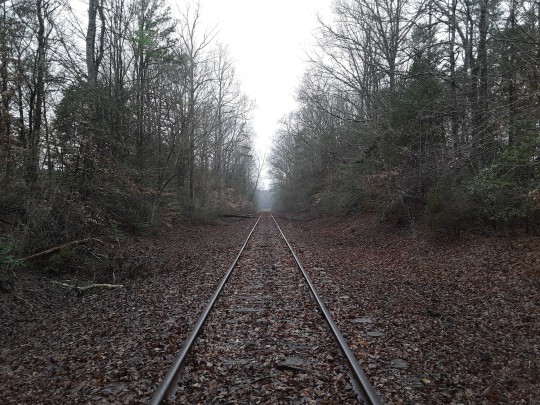

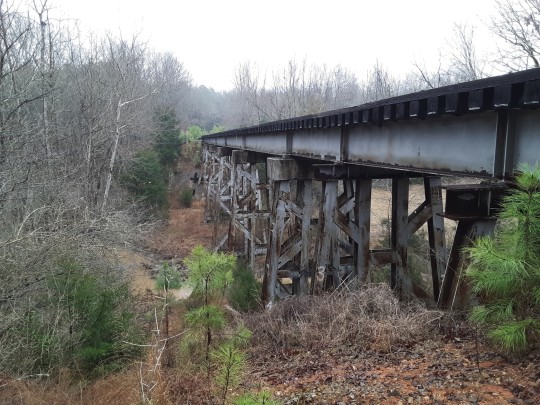
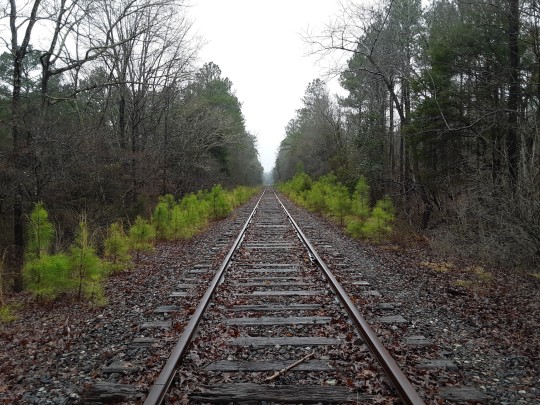
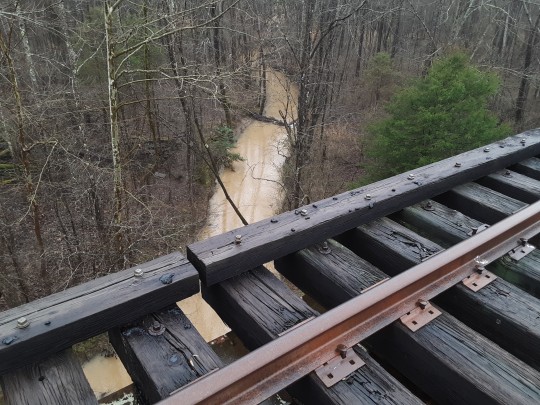

"No greater peace did Marcher Arrant find than when he was walking abandoned railroad tracks."
#marcher arrant#graffiti#walking art#walking artist#marcher graffiti#march graffiti#abe lincoln brigade#psychogeography
92 notes
·
View notes
Text
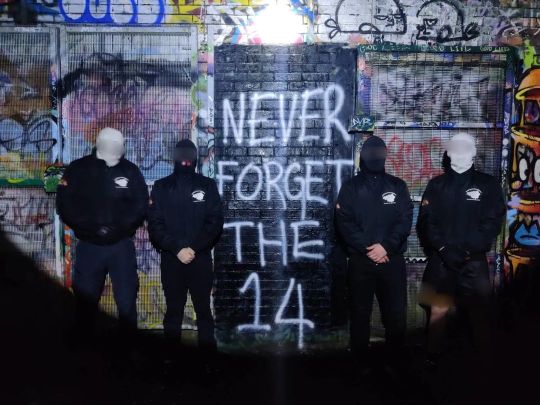
"Never forget the 14"
Memorial graffiti in Manchester for the 14 unarmed Catholic civil rights marchers who were murdered by British soldiers in Derry on Bloody Sunday, 30 January 1972.
50 years ago a nonviolent march against internment turned into a deadly massacre when British soldiers shot dozens of unarmed civilians, many in the back. 14 died and another 26 were wounded
The struggle for justice continues. The scars of that day still traumatize an island struggling for autonomy.
602 notes
·
View notes
Photo
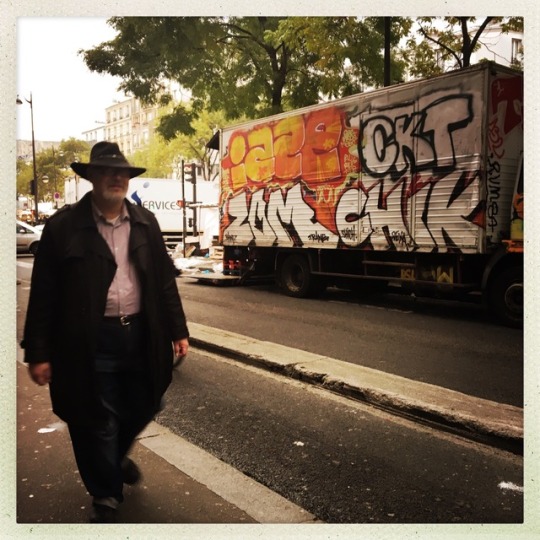
#paris#france#belleville#belleville hills#75020#market#marcher#marché#graffiti truck#graff#handstyle
5 notes
·
View notes
Link
Hundreds of peaceful protesters marching from the Cedar-Riverside area were ambushed and kettled by MPD, State Patrol, SWAT and National Guard personnel tonight and held on the I-94 freeway until they were arrested. The demonstrators were attempting to leave the freeway and were within meters of the exit after a short march, but were trapped by a line of police and not permitted to leave. The march was a planned response to the United States election and featured multiple organizations in solidarity. The action was exceptionally peaceful, involving some families and children, and with no graffiti, violence or thrown objects-- yet the police response, with hundreds of heavily armed and militarized state officers, some on horseback and with military vehicles, responded with disproportionate force.
Arrests were conducted slowly at the end of the group at first, while movement organizers tried to address officers in charge at the front, asking again to let the marchers pass. Demonstrators cheered for each of their friends as they were cuffed and arrested by officers. It appears that some families with smaller children may have been allowed to leave together, while other kids under the age of 18 were instructed to call their parents and were taken to Juvenile Detention after being cuffed with zip-ties.
Remember how the Democrats of the Minneapolis City Council earlier this year promised to abolish the Minneapolis Police? You can see how well that turned out. - redguard
18 notes
·
View notes
Link
“The crowd was extraordinarily diverse for a right-wing event. Black, Latino, Asian and Middle Eastern fans of the president walked alongside white nationalists, boogaloo boys and marchers with Confederate flags. The route ran along a wall where someone had slapped a sticker over existing graffiti, turning "Black Lives Matter" into "Trump Lives Matter."
“In a way, that's the question: Is "fringe" still accurate if debunked ideas are endorsed by 70 million voters?“
-------
2 notes
·
View notes
Text
Merci à Baptiste Rappin pour cette belle lecture matinale signée Édouard Schaelchli .
«Populiste» diront (bêtement) quelques-uns, je dirais : très attentif à une réalité qui embarrasse, fait obstacle aux visées les plus inavouables, laquelle n’oubliera pas de nous rappeler à l’ordre, un jour ou l’autre. Sans distinction aucune.
Et non, que les pasteuriens indéboulonnables se rassurent, ce texte n’est pas un plaidoyer contre le principe vaccinal en soi, plutôt envers tout ce qui nous a menés à la médiocrité infinie d’un factice salut pas même scientifique, vulgairement perçu et promu à travers la seule onction vaccinale. Logique issue d’une ingénierie de masse plutôt sophistiquée, substantiellement très pauvre, et qui voudrait porter un coup fatal à ce qui constitue et nourrit nos plus précieuses ressources.
«Vaccinez-vous. Oui, suicidez-vous !»
On peut avoir été sidéré – un instant, bien sûr – de l’inconcevable naïveté de ceux qui ont cru, en prenant le Capitole (ô Flaubert[1]), mettre fin à l’odieuse arrogance de l’establishment homo-américain, alors qu’ils ne faisaient sans doute que précipiter l’Amérique dans une nouvelle fièvre ultra-sécuritaire, comparable à celle qui suivit l’effondrement des Twin Towers, le 11 septembre 2001. On peut aussi avoir été saisi du même sentiment de jubilation, du même tressaillement d’allégresse qu’éprouva Baudrillard, en voyant dans cet «événement symbolique majeur […] la preuve éclatante de la fragilité de la puissance mondiale» dont les tours «étaient l’emblème», l’incarnant encore «dans leur fin dramatique, qui ressemble à un suicide». De même, aujourd’hui, en regardant cette invasion tranquille du Congrès américain par une poignée d’imbéciles heureux qui n’avaient peut-être pas d’autre motivation politique que de se rendre visibles sur une scène vidée de tout enjeu réel, avec tout ce que cette séquence à la Flaubert comporte de littéralement obscène, on sent, en dépit de ce qui est fait pour rendre cet événement aussi nul et non advenu que possible, qu’il s’est vraiment passé quelque chose qui mérite une «analyse radicale», et surtout pas une «interprétation factice», qui mérite d’être regardé autrement que comme un fait.
Car il y a, là, comme dans tous les événements qui ne se laissent pas «réduire à l’état de fait», une dimension qui échappe aux faits, une part d’impossibilité radicale qui arrache «les concepts à leur champ de référence», rendant «vaine toute tentative de totalisation, y compris par le Mal ou par le pire», et cela «même si le système [continue] sans répit, mais sans fin, pas même celle de son apocalypse». Il faut le redire : «l’apocalypse est déjà là, sous forme de liquidation inexorable de toute civilisation, peut-être même de l’espèce». Voilà ce que signifie, dans le sillage de l’effondrement des Twin Towers, l’événement Trump, par rapport auquel l’élection de Joe Biden n’est qu’un épisode insignifiant qui ne fait que s’inscrire dans le processus global de simulation en lequel consiste désormais l’exercice du pouvoir devenu, du fait de l’élimination de toute négativité, empire hégémonique de la positivité.
Pour nous, toutefois, Français, cet événement ne peut éveiller qu’un sentiment de malaise, du moins si l’on songe que, finalement, ce qu’ont si bien réussi les trumpistes, c’est ce que nos Gilets jaunes ont en vain tenté de faire (marcher sur l’Élysée, en révéler brutalement l’insondable vacuité si bien occupée par ce roi du vide qu’est Macron), pour se contenter de quelques graffitis sur l’Arc de Triomphe et de l’incendie d’une petite préfecture de province – maigre consolation qui n’en a pas moins provoqué quasiment la même indignation des commentateurs de l’actualité. Est-ce à dire que, décidément, les Américains sont vraiment plus doués que nous, ou est-ce le signe que, malgré tout, ce qui se passe en France ne se laisse pas purement et simplement rabaisser au rang de version rabougrie de ce qui se passe en Amérique ?
Ce qui est sûr, c’est que le pouvoir, chez nous, n’a pas encore la puissance de simulation qui permettrait de laisser passer ainsi une bande d’heureux imbéciles pour lesquels le plaisir de se prendre en selfie, les pieds sur la table du Chef, constitue le summum de la subversion politique. Non, il a fallu que le pouvoir prouve qu’il était le pouvoir, en répandant une saine terreur parmi des gens que n’aurait peut-être pas satisfait l’élection d’un Trump ou d’une Le Pen. Indice, espérons-le, que les choses ne sont pas, en France, aussi définitivement bouclées qu’elles le sont aux États-Unis.
Osons donc en faire l’hypothèse: la France pourrait être le théâtre d’une Révolution qui ne consisterait pas seulement à s’engager irréversiblement sur la voie d’une liquidation de tout ce qui constitue la civilisation. Mais quelle Révolution ? Assurément pas la plate répétition de ce qui se passa en 1848, quand l’illusion qu’on pouvait «donner le pouvoir au peuple» aboutit à la sinistre comédie d’un suffrage universel dont la première conséquence fut d’installer à la place du Roi le premier imbécile venu, qui n’eut de cesse de se prendre pour Napoléon et d’accélérer tous les processus qui pouvaient faire d’un grand pays de culture une vaste entreprise de développement industriel et financier. Après deux guerres mondiales et l’assujettissement complet de la terre aux principes d’une logique d’exploitation qui détruit et démembre (et remembre indéfiniment) tous les milieux, naturels et sociaux, pour en faire de purs espaces de circulation des flux et des signes, nous savons que le lieu du pouvoir est d’abord un lieu symbolique auquel il ne faut pas toucher – un lieu sacré, que la profanation rend maudit.
Nous n’avons pas, en tant que peuple, à prendre le pouvoir, ni même à y participer. Nous avons toute autre chose à faire : à vivre. Vivre est notre seule affaire, et vivre est notre profonde et essentielle compétence, à laquelle nous devons consacrer le meilleur de nous-mêmes. Et c’est bien ce qu’exprimait en profondeur le mouvement des Gilets jaunes, quand, se postant aux ronds-points, il installait ses tables et ses foyers de partage partout où il pouvait bloquer la circulation d’un immense transit qui ne s’alimente en fin de compte que de nos appétits de consommation marchande. Vivre, oui, et non survivre, comme cherche à nous y réduire l’immense protocole morbide des marchands de masques, de tests et de vaccins qui nous gouvernent et dont le gouvernement ressemble de plus en plus à une entreprise de pompes funèbres, uniquement préoccupée de stocker des cadavres dans les chambres froides de la comptabilité nationale. Vivre – les uns pour les autres, dans un grand effort de respiration et d’aspiration, dans un grand rythme d’amour où l’essentiel se laisse constamment déchiffrer, sous la forme d’un fascinant mystère, sur le visage de l’homme qui s’expose et s’engage, travaille et peine, rue et rit, s’adonne à d’infimes passions, souffre et partage le fruit de ses efforts – spectacle purement gratuit que nos rues dispensaient tous les jours quand les écrans de la représentation délétère du néant n’avaient pas encore envahi nos vies.
Il faut vivre, il faut que nous vivions, telle est l’urgence, tel est le sens de cette épreuve que constitue l’épidémie contre laquelle le pouvoir des techniciens-sorciers qui prétend assurer notre préservation ne connaît d’autre remède que la vaccination, cette pure opération de synthèse génétique par laquelle les incompréhensibles mouvements du vivant se transforment en une mécanique sagement contrôlée, une véritable singerie physiologique qui ne peut qu’achever de faire de l’homme une espèce à peine supérieure aux singes les plus inférieurs, ceux qu’on peut, dans des cages confortablement aménagées, faire ressembler à des hommes en les affublant d’un costume, à l’instar de ces pauvres qu’on voit, dans tous les Mac Donald, s’affairer sous la livrée d’une marque dévolue à la transformation de toute alimentation en consommation de produits standardisés dont la prédigestion fait de notre estomac un pur organe de soumission au système. Il faut vivre, retrouver le sens de ces vastes tablées dans lesquelles nos familles, élargies le plus souvent à tout le voisinage, savaient si bien célébrer les événements d’une vie qui formait un tout dont on ne pouvait rien retirer sans menacer d’en détruire la belle ordonnance – une vie qui était à la fois sociale et spirituelle, culturelle, cultuelle et politique, à l’exclusion de toute préoccupation sanitaire, trop fière pour se soumettre jamais aux injonctions comptables d’une administration qui ne connaît que les résultats statistiques de ses opérations de contrôle et d’uniformisation.
En ce sens, l’épidémie est une chance, dont nous avons pu goûter les principaux effets quand, pendant le confinement de mars, tout s’est arrêté en vertu d’un ordre stupéfiant qui s’imposa comme par miracle à tous nos chefs d’État, tous pris d’une sorte de mimétisme imbécile les rendant incapables de réagir autrement à l’événement qu’en imposant des normes de comportement aussi ineptes les unes que les autres. En dépit de la diarrhée réglementatrice qui s’abattait sur nos existences, nous avons pu, dans le silence d’un espace social tout d’un coup délivré de tout impératif économique et sous un ciel que ne rayait plus l’insulte quotidienne du trafic international, mesurer combien la vie est belle – combien, du moins, la vie serait belle si elle n’était constamment détournée d’elle-même par les contraintes d’un système qui se construit et s’enrichit de toutes nos démissions individuelles et collectives, d’un système qui n’enrichit que ceux qui, n’ayant rien à faire de leur propre existence, se vouent sans cesse au service d’une existence fantomatique entièrement téléguidée par des maniaques de rentabilité technicienne et marchande.
Ne laissons pas passer la chance que nous offre un virus pour une fois résistant à toutes les manœuvres de l’imagination techno-scientifique, car ce mutant de la mondialisation néo-libérale n’est pas notre ennemi. Il ne tue pas, et les morts qu’on lui attribue trop facilement, s’ils pouvaient témoigner, témoigneraient d’abord de l’état dans lequel des décennies de gestion délirante du patrimoine commun de l’humanité ont plongé les territoires du vivant. Sous le masque du virus, c’est le vivant lui-même qui se manifeste, et tout porte à croire qu’il sera, cette fois, plus fort que le vaccin que prétendent lui opposer les laboratoires du néant social inféodés à la puissance numérisée du capitalisme financier. Aux tenants de l’ordre sanitaire sous le masque duquel il est si facile de reconnaître les promoteurs d’une mondialisation qui est la véritable pandémie de notre monde, opposons nous aussi le cri que les Gilets jaunes avaient si à propos jetés au visage de l’ordre policier : «Suicidez-vous – vaccinez-vous vous-mêmes, ordures.»
Égletons, le 9 janvier 2021
[1]. Il est urgent de relire, dans L’Education sentimentale, la scène immortelle de la prise du Louvres en 1848, pour savourer tout à fait les photos prises dans la salle du Congrès, mardi dernier).
1 note
·
View note
Text
HONG KONG UPDATE 15 DEC 2019
1351: Admiralty. Pro-Beijing rally “against violence” takes place at Tamar Park, over a thousand in attendance.
1353: HKer “missing” after crossing Chinese checkpoint on mega bridge to Macau. The disappearance first emerged on 14 Dec 2019 when the man’s son told local media his father had texted to say he was being detained while passing through an artificial island manned by Chinese police on his way to the semi-autonomous city of Macau.This bridge and tunnel network links HK, Macau and mainland city Zhuhai. The artificial island lies in Chinese mainland waters.
“His last message said ‘I got arrested.’ ” Mainland police set up a new checkpoint the previous week ahead of an upcoming visit to Macau by Xi Jinping.
1400: Shatin. Riot police illegally enter New Town Plaza. Citizens have been planning to ‘window shop’ at various malls, aiming to ‘redirect’ the Christmas economy to pro-democracy shops.
1426: Shatin. Reporters say 2 shoppers with anti-protest views tried to stop a group from spray-painting graffiti and a fight ensued. One was beaten while the other was spray-painted in the face. As usual, the fighters (and I’m talking about the shoppers and the attackers) both sides, are they humans or ghosts, we don’t know. Meanwhile all the other shoppers inside the mall away from the riot police cordon are heckling: “Disband the police immediately!”
1430: Admiralty. A journo is surrounded and cursed at by participants, and then pushed over by a middle-aged man. She was then escorted to safety by police.
1439: Japan. A march takes place in Hibiya Park, Tokyo, as marchers call for Japan enact similar legislation to US’s HK Human Rights and Democracy Act. At least 500-600 in participation eventually.
1443: Shatin. In anticipation of ‘window-shopping’ protests, there is a heavy police presence in the vicinity of various malls across HK.
1500: Tai Koo. ‘Window-shopping’ protest at Cityplaza, dozens present.
1514: Kwai Fong. Citizens arrive at branches of Maxim’s Arome Bakery and franchise Genki Sushi in Metroplaza and loudly mock the pro-Beijing ownership. No vandalism so far. The shops shut their doors as a result.
1529: Kowloon Bay. Troops of riot police storm into Telford Plaza and arrest citizens. A child is pepper-sprayed directly on the face and requires first aid.
1540: Shatin. Plain-clothes police suddenly make 1 arrest at New Town Plaza. See? It’s always the same script. Someone comes to disrupt the protests, ppl fight, “conflict” created, police come, police hang around, suddenly arrest ppl indiscriminately. Rinse repeat.
1550: Shatin. At least 2 detained as riot and plainclothes police enter unlawfully to arrest ppl. A few citizens have been moving signs from inside the mall to the outside minibus stations, fight ensues, pepper spray deployed.
1558: Shatin. Teargas. Police suspected to have shot/thrown it from the overpass, but police say they didn’t shoot teargas. LOL. Police have also entered the local mall.
1607: Shatin. At least 4 arrests in past 30 mins.
1612: Kowloon Bay. Apple Daily reports 2 arrests made in Telford Plaza, as riot police pepper spray shoppers inside.
1618: Shatin. Police raise blue flag warning of illegal assembly outside New Town Plaza, with reports that they had earlier fired one round of teargas with zero warning.
1620: Shatin. MTR shuts the exit leading to New Town Plaza, as riot police enter the mall for a third time.
Unknown: Kwai Fong. 2 plainclothes police officers holding batons at the Metroplaza are confronted by residents who ask them about their identities.
1620: Kwai Fong. Police also enter Metroplaza.
1627: Shatin. Riot police everywhere inside New Town Plaza now, hunting for protesting citizens after they vandalise the mall’s facilities - the central square in the mall is now scrawled with a large protest slogan. Mall broadcasting warning urging shoppers to be careful.
1628: Kwai Fong. 1 white man in Metroplaza mall arrested by police undercovers who did not announce themselves as police and brought a police van. Ah, trying to do kidnapping I see. (USP reports he was soon released.)
1628: Shatin. Police arrest 3 additional ppl. 7 arrested in Shatin within past hour so far.
1630: Shatin. Standoff btwn riot police and citizens continue in New Town Plaza. Police point rifles at shoppers and threaten at least once to fire at them. Unacceptable policing of any event, let alone in a shopping mall.
1633: Causeway Bay. 1 man handcuffed after being stopped by riot police. Man argues he was only passing by. Crowd gathers around the incident. Nearby mall remains calm.
1640: Admiralty. There are a sea of Chinese flags as pro-Beijing demonstrators take selfies in the “anti-violence” rally. NOTE: You’d realise there is this very weird habit of selfie-taking, because it is used as proof of attendance to collect payment - many of these supporters are actually hired, and some are PRC Chinese from Mainland China who are paid and bussed down into HK for a one-day tour. I wish this is fake news but it ain’t.
1641: Shatin. Riot police point guns and pepper spray at random unarmed citizens inside the mall after someone throws a bag of rubbish and water down at them when they were retreating with a few arrested citizens.
1659: Kowloon Bay. Riot police enter Telford Plaza for second time. 1 arrest filmed. Now total 3 arrested there.
1700: Kowloon Bay. 1 arrested. Total 4 arrested there. Arrested ppl are pressed hard onto the floor with multiple police putting full body weight through their knees on the citizens’ vulnerable points, possibly resulting in heavy injury and even death.
1714: Shatin. After police leave the mall, an older man with anti-protest pro-Beijing views begin hitting the cameras of journos. Police then return to the scene to escort the man away without arrest.
1716: Kowloon Bay. Police conduct stop and searches outside Telford Plaza mall.
1723: Tuen Mun. More stop and searches by police, who act like an occupying force. Tuen Mun district councillor Michael Mo went to the local park to question dancing entertainers accused of loud noise and lewdness (note: the entertainers are middle-aged aunties from China, who dress in revealing clothing and sometimes they well, engage, with interested middle-aged uncles). Riot police later arrived and engaged in a stand-off with Mo’s supporters. No arrests.
1733: Central. Several hundred social workers and other citizens rally in Edinburgh Place on Sunday aftnn in prep for the sector’s general strike next week.
1745: Police issue statement claiming smoking object outside Shatin’s New Town Plaza - earlier reported by multiple outlets as tear gas - was a smoke bomb thrown by protesters. Lies....
Apparently a citizen was suddenly cuffed by undercover police in a mall and another citizen who wanted to rescue them jumped down from a 2 storey balcony. (Note: He was fine.)
1801: Kowloon Bay. Crowd demands answers from Telford Plaza mgmt staff as to why they allowed riot police to enter the mall. Staff say they never called the police.
1811: Tai Koo. Protesting citizens stick posters to pro-Beijing-owned shops in Cityplaza that explained why they should be boycotted, but stop short of vandalism.
1821: Shatin. Crowds here also surround mall staff to demand answers as to why riot police entered the mall.
1930: Admiralty. Memorial for Marco Leung, the yellow raincoat man who fell to his death while in protest 6 months ago. Hundreds line up to pay respects.
2000: Shatin. Only a handful of citizens remain resting inside as the “window shopping” events come to a close.
2010: Tsim Sha Tsui. Mall protest in Harbour City. Ppl chant slogans as they “window-shopped”.
2012: Admiralty. Around 10 riot police on standby across the road from the memorial for Marco Leung, but they remain stationary.
2024: Shatin. Journos spot around 5 masked men carrying wooden and hiking sticks near the MTR station. They did not answer whether they were undercover police, but uniformed police are not on the scene. The men asked the journos not to film. They later walked up a hill to an isolated rural village before going back down. “Are you bringing us up there to beat us up?” asked a journo at one point. The 5 men has earlier arrived at New Town Plaza, before being questioned by the remaining citizens after suspicions were raised about their identity. They then leave the journos’ pursuit via 2 taxis.
2101: Mongkok. Riot police charged at a crowd of ppl all of a sudden and made at least 1 arrest outside Grand Plaza. Around 100 had gathered peacefully outside Langham Place and at least 2 arrested.
2240: Mongkok. Riot police fire pepper spray at citizens and journos near intersection of Nathan Rd and Shantung St.
2300: Admiralty. Long queues still at Pacific Place to mark the six month anni of the first protester death.
2300: Mongkok. Police then head to Sai Yeung Choi St South where they raised a black warning flag for around 10 seconds before firing several canisters of teargas.
2325: Mongkok. Around 8 police officers try to push back a group fo reporters near intersection of Shantung St and Portland St. Half a dozen police officers beat up with batons and arrest a cameraman from Mad Dog Daily after pepper-spraying his face at close range. Reason for arrest remains unclear. Despicable.
His editor has said that reporters are within rights to be on the scene working and that they had followed police orders to return to the pavement; calls police action an “irrational and barbaric act”.
2336: Mongkok. Gathered crowds of protesting citizens, bystander and journos are pepper-sprayed as riot police push through Shantung Street earlier.
Unknown: Mongkok. A student reporter from Baptist Uni is hurt in the eye by a shot of teargas. His face is swollen from being bashed by the teargas canister. There were only medics and journos on scene when the police fired at him, and he says that it felt intentional as they had aimed at the pavement, where the journos+medics were.
2340: Tseung Kwan O. Night protests are also taking place here as bricks are laid on the road.
2343: Mongkok. Teargas on Nathan Rd and Soy St.
2350: Mongkok. Riot police are being heckled by passers-by shouting “black cops” as they stand by waiting for their next orders.
16 Dec 2019 0043: Mongkok. Police left for some time but then returned to clear barricades and fired teargas at Nathan Rd and Shantung St.
0100: Mongkok. Riot police subdue 1 man on Portland St. Before they leave, they fire at several rounds of teargas.
0106: Mongkok. Police fire 5 rounds of teargas at Nathan Rd and Argyle St.
10 notes
·
View notes
Photo
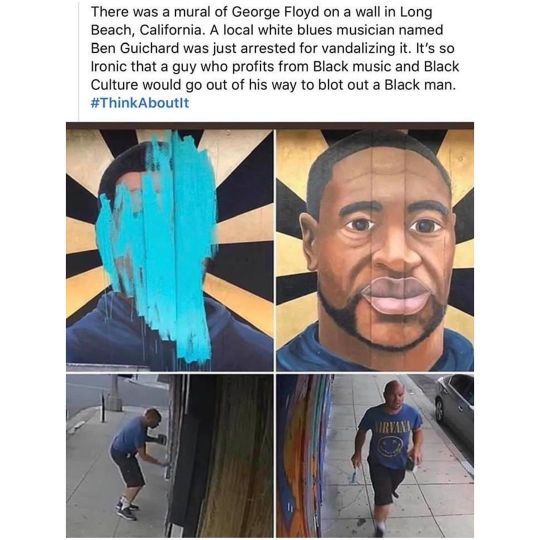
Some George Floyd Murals Are Being Defaced Images of protests taking place in cities across the world have often featured marchers walking past elaborately designed artwork honoring George Floyd, but some of those murals have been defaced recently by vandals, some of whom have left behind messages of hate. Murals memorializing Floyd in at least six cities have been defaced, most recently one just outside of Boston, where the late black man’s face and some of his name was scribbled out with white spray paint, but the artist has vowed to repaint it. A similar scene played out in Long Beach, California, where an image of Floyd outside of a hair salon was covered with blue paint; the artist painted a new version that reportedly is “graffiti proof.” In Greensboro, North Carolina, an artist recreated a Floyd mural after vandals defaced it with blue spray paint and also wrote “white power” over nearby boarded windows. An artist in Pensacola, Florida also had to recreate his mural after the original was defaced less than a day after it was painted. In Birmingham, Alabama, a suspect was arrested for defacing a mural—painting a large “X” over Floyd’s face—but the owner of the structure containing the mural declined to press charges, saying “forgiveness needs to be first and foremost”; the vandalism to the mural was reportedly quickly repaired. One of the most egregious defacings happened outside of the U.S., in Dundee, Scotland, where a vandal painted a neo-Nazi symbol over Floyd’s face and erased the word “black” from “black lives matter.” https://www.forbes.com/sites/nicholasreimann/2020/06/11/some-george-floyd-murals-are-being-defaced/ https://www.instagram.com/p/CBaivO2gINN/?igshid=6kgrerw5v2s
2 notes
·
View notes
Link
A protest through the streets of downtown Oakland, California, in support of racial justice and police reform turned violent when “agitators" among the demonstrators set fire to a courthouse, vandalized a police station and shot fireworks at officers, authorities said.
About 700 demonstrators participated in what started as a peaceful march Saturday night but then some broke from the larger group and smashed windows, spray-painted graffiti and pointed lasers at officers, the Oakland Police Department said on Twitter. Several tweets called for peace and asked organizers to “help us provide safe spaces and safe places for demonstrators.”
It’s good to see that, finally, the narrative has caught up to what I’ve been saying the last three or four years: that the Black Bloc anarchists and plain vandals are not actually party to the demonstrations and causes thereof.
I came to this realization during the Freddie Gray protests in Baltimore: the standoff with police was a good distance away from where fires had been set. It wasn’t the protestors causing the property damage, it was their camp-followers. Opportunists were taking advantage in the breakdown of order and withdrawal of police presence from the rest of the city (often as unnecessary as are the excessive shows of force with which police confront civilly disobedient marchers). There may be a correlation between disturbances/disruptions and violence/looting, but they are different groups engaged in each activity. There is no justification for excusing or valorizing the latter because it is timed concurrently with legitimate protest. Not only is it a “bad look” to associate the two; they’re fundamentally different things - as BLM local leaders have tried to tell the self-aggrandizing radicals and revolutionaries since the earliest days of the George Floyd demonstrations.
So here we are again. A small radical contingent decides to co-opt a protest and make the headlines about their handiwork. It’s brilliant marketing, to drive away the middle and ensure the only visible alternative to fascism is an equally extreme counterpart. It’s intentionally counterproductive, and it’s only within the past few months that left-wing mouthpieces have gotten wise to this. Short of making it clear to agitators and provocateurs that they are not welcome, media distinguishing between them and the broader social justice movement would do progress and accuracy a huge favor.
1 note
·
View note
Text
Why is This Antisemitic?
This was discovered in a bathroom at San Francisco State University this week.
For those who can't see an image, it is a swastika labeled "San Francisco State University", with a Star of David in the middle. Below it, the author wrote "Free Palestine".
Most people have condemned this as antisemitic. I agree. But I want to actual go through the steps. In particular, I want to challenge some of the antisemitism skeptics -- the people who think too much is called antisemitic, particularly in the "criticism of Israel" subspecies -- why this is properly deemed antisemitic (or, perhaps, for them to forthrightly assert that it is not).
In doing so, I want to insist on keeping the focus on the graffiti being a case of antisemitism. Certainly, it is vandalism, and therefore is a crime regardless of whether it is specifically antisemitic or not. Likewise it might be described as rude, uncouth, overwrought, insensitive, or any number of other bad things that nonetheless are distinct from antisemitism. David Hirsh describes this pivot as "pleading guilty to the lesser charge" -- admitting that a challenged piece of conduct is wrong in some way while holding the line that it was not antisemitic. I fully accept that many people will agree that this graffiti was "wrong", in some way, but I want to concentrate on establishing it specifically as an antisemitic wrong.
We spend a lot of time insisting that "criticism of Israel is not necessarily antisemitic", which is true. We spend considerably less time establishing that criticism of Israel is not necessarily not antisemitic either. Yet both are important; and in particular, it is useful to test whether our proposed demarcation lines between what is antisemitic and what is not can capture cases such as this.
So, why is the above antisemitic? Here are some candidates:
The phrase "Free Palestine". But surely this can't suffice on its own, at least if the "pro-Palestine =/= antisemitic" formulation is to have any legs at all. The fact that the speaker claims to desire a "free Palestine" would not, on its own, establish antisemitism.
The Star of David. This is perhaps the clearest hook that the target is Jews, not Israel -- but then, we know that some say it is being used not as a Jewish symbol but an Israeli symbol (this was the justification for expelling the Jewish marchers from the Chicago Dyke March -- their Rainbow flag with a Star of David was coded as "an Israeli flag superimposed on a rainbow flag"). One can certainly imagine the "artist" here making that case -- after all, by saying "Free Palestine" they at least implicitly cast their target as being Israel, specifically.
The swastika. Again, we might think this suffices to establish the drawing as antisemitic. But note that the swastika could be symbolically representing two different things here. One possibility is that it is meant to evoke sympathy for Nazis (the artist saying, in effect, "I am a Nazi; I am making a Nazi point"). In that case, the antisemitism becomes pretty undeniable. But the other possibility is that the artist is intending to saying "Israel is a Nazi state, and Nazis are awful" (the artist is putatively making an "anti-Nazi" point, while associating Israelis or Zionists with the terrible Nazis). Is this formulation antisemitic? Note we just went through this, to some extent, with Eli Valley and the "kapos" controversy (and before that, with David Friedman) -- many people are very insistent that it is perfectly fair game, or at least not antisemitic, to compare Israelis or Zionist Jews to Nazis.
If we think that this scrawl was antisemitic, we implicitly reject at least some of these defenses. We have to commit to the position that using the Star of David to denote a group that you hate is antisemitic, or that comparing Israel to Nazism is antisemitic. And that, in turn, should constrain us come other cases. The fact is, if we think this was an antisemitic act, then we can't be so blithe in asserting that other perhaps more elegant acts whose alleged antisemitism rests on similar presuppositions (e.g., that Israel = Nazi comparisons are antisemitic) are mere "criticism of Israel". And, by contrast, if we want to hold the line and say that it is not antisemitic to compare Israel to Nazis, then we are far harder pressed to agree that even an act like this is an antisemitic act.
via The Debate Link http://bit.ly/2Wn5E4z
62 notes
·
View notes
Text
오늘의 어휘목록: RADIO APART X 이동욱
Vocabulaire tiré de:
RADIO APART X 이동욱 (la vidéo dure 1h16)
Liste faite sur plusieurs jours ~

쓸쓸하다 = seul, triste
떠오르다 = se rappeler, se souvenir, se remémorer, venir à l'esprit
빼앗기다 = se faire voler, se faire arracher, se faire prendre
들 = plaine, campagne, prairie
“새삼 깨달았습니다”
= “J’ai de nouveau réalisé”
⤗ 새삼 = de nouveau, encore une fois
⤗ 깨닫다 = réaliser, comprendre, percer
거리를 두다 = se tenir à distance (de quelqu’un)
악수 = poignée de main
~조차 = même pas ~
“익숙지 않은 일들인데 이런 일들이 어느새 익숙해져가고 있습니다”
= “Je ne suis pas habitué à ce genre de choses, mais s’en m’en rendre compte, je m’y habitue.”
⤗ 익숙지 않다 = ne pas être habitué (à ....)
⤗ 일들 = trucs, choses
⤗ 어느새 = sans s’en rendre compte
씁쓸하다 = être amer, âpre
재회하다 [再會-] = se revoir, retrouver
바라보다 = vouloir, désirer, espérer, attendre
선곡 [選曲] = sélection de musique
대변하다 [代辯-] = parler pour quelqu’un, parler à la place de quelqu’un, être le porte parole de quelqu’un
세대 차이 [世代 差異] = fossé générationnel, conflit de générations
실시간으로 [實時間-] = en temps réel
자라다 = grandir
장소 [場所] = lieu, place, endroit
낯설다 = être étranger, peu familier (avec quelque chose)
원래 [元來/原來] = originellement, à l’origine
예전에 = autrefois
진행하다 [進行-] = aller, suivre son cours, marcher, avancer, progresser, développer
달라지다 = changer, être changé, être modifié, subir une modification, se transformer, se modifier, varier
꽤 = plutôt, relativement, assez, très
형식 [形式] = contenu, forme, apparence
짧게 = brièvement
설명 [說明] = explication
사연 [事緣] = raison,motif , cause, histoire
보이는 라디오 = radio visible
나누다 = séparer, diviser, classer
한번 씩 [-番-] = un par un
비정기적 [非定期的] = irrégulier, sporadique
“언제 또 할지 모르네요”
= “Je ne sais pas quand je le referais”
다하다 = épuiser, se terminer, s’achever
"하도록 하겠습니다”
= “Je vais (le) faire”
“방금 들으셨던”
= “Ce que vous venez d’entendre (/d’écouter)” ....
“직접 썼습니다”
= “Je l’ai écrit moi-même”
써보다 = essayer
재회 [再會] = retrouvailles
떠오다 = venir en flottant
작성 [作成] = composition, rédaction, élaboration, construction, préparation
진작 = avant
용서 [容恕] = pardon, excuse
기념으로 [紀念/記念-] = en/comme souvenir, en mémoire
뻔뻔하다 = avoir du/ne pas manquer de culot, culotté, avoir du toupet
일부러 = exprès, intentionnellement
마무리 = bilan, fin, récupération, finition, finissage, accomplissement
날름 = rapidement, agilement
써먹다 = utiliser, se servir de
그 시절 = ces jours (ci)
출산 [出産] = accouchement, naissance
앞두다 = être sur le point de, à l’approche de quelque chose
청취자 [聽取者] = auditeur (à la radio)
돌 = premier anniversaire
공무원 시험 = examen d’entrée dans la fonction publique
합격 [合格] = admission
의료계 [醫療界] = milieu médical
종사하다 [從事-] = s’occuper de, se consacrer à
고생 [苦生] = effort, peine, tracas, souci
진심으로 [眞心-] = de ton (mon) coeur, sincèrement, de toute (mon) âme
흐르다 = s’écouler *s’applique aussi pour le temps
늙다 = vieillir, prendre de l’âge
근황 [近況] = dernières nouvelles, nouvelles récentes
소소하다 = (peut dire plein de trucs, attention lol) trivial, sans importance, menu, minime, infime, être triste, lugubre, être désert(e), (paysage) être désolé(e), (être) affairé(e) et bruyant(e),avoir la raison claire
농부 [農夫] = agriculteur
고급스럽다 [高級-] = élégant, chic, classe
의견 [意見] = opinion, avis
“사실 한글이 별로 안 보예요“
= “ En fait, je ne vois pas très bien (/je ne sais pas très bien lire) le coréen.”
등등 [等等] = nom non autonome indiquant que l'on résume une énumération en évitant d'évoquer tous les autres exemples que ceux mentionnés avant
의외로 [意外-] = contre toute attente, à (sa) surprise, à (son) étonnement
“이거 참 댓글 읽기가 쉽지 않습니다”
= “Ce n’est pas facile de lire les commentaires”
소개하다 [紹介-] = présenter, recommander, introduire
신청곡 [申請曲] = demande de chanson, chanson qu’on aimerait écouter
틀다 = tourner, tordre, se tordre
진행 [進行] = cours, développement, avancement, progression
달구다 = réchauffer, chauffer, chauffer à blanc
대란 [大亂] = crise, bouleversement, grande agitation, tumulte
재택근무를 하다 [在宅勤務-] = travailler chez soi
단돈 = petite somme d’argent
무료 배송 [無料 配送] = livraison gratuite
발견하다 [發見-] = découvrir
통하다 [通-] = communiquer avec
평소 [平素] = temps habituel, temps normal
썩 = tout de suite, maintenant, extrêmement
번쩍 = sans effort, sans peine, aisément, soudainement, en scintillant, en clignotant, idéophone exprimant la manière dont quelqu'un se ressaisit ou reprend ses esprits instantanément
뜨이다 = se réveiller (ouvrir ses yeux), se faire voir, se (faire) remarquer, dresser l’oreille (être curieux)
당시 [當時] = à cette époque, en ce temps là
관광 [觀光] = tourisme
홍보대사 [弘報大使] = ambassadeur honoraire
옆자리 = la place (le siège) d’à côté
관람하다 [觀覽-] = visiter (un musée), regarder (un film)
사전 [辭典] = dictionnaire
간장공장 [-醬工場] = usine de sauce soja
공장장 [工場長] = directeur d’usine
수준 [水準] = niveau, gamme, moyenne
사명감 [使命感] = vocation
참전하다 [參戰-] = participer à une guerre, s'impliquer dans une guerre, entrer en guerre
도전 [挑戰] = challenge, défi
무참히 [無慘-] = cruellement, sauvagement, atrocement
실패 [失敗] = (un) échec
덕분에 = grâce à (...)
감자볶음 = pomme de terres sautées
감자전 [煎] = galette de pomme de terre
감잣국 = soupe de patates
이만하다 = être autant, être aussi [gros, long] que cela, être dans cette mesure [degré]
추천하다 [推薦-] = recommander
외식 [外食] = repas à l’extérieur
불황 [不況] = dépression, récession
호응 [呼應] = réaction, réponse
다행스럽다 = heureux, chanceux *que la situation se passe mieux que prévu
친분 [親分] = relation amicale, amitié
오징어 = calamar
비하다 [比-] = comparer quelque chose à quelqu’un, comparer deux personnes
값 = prix, valeur, coût
기회 [機會] = occasion, chance, opportunité
구입하다 [購入-] = acheter, acquérir
피로회복 = récupération de fatigue
나른하다 = mou, léthargique
채칼 = (une) râpe
부침가루 = farine pour galette/pancake
밀가루 = farine de blé
가루 = poudre
어슬어슬 = *idéophone* lentement, à pas lent, peu à peu, petit à petit
기름 = huile
튀기듯 = comme une friture
굽다 = griller, rôtir
농가 [農家] = ménage agricole, ferme, maison fermière
직장인 [職場人] = salarié, travailleur, employé
과거 [過去] = passé, événement ou vie passée
상당히 [相當-] = très, considérablement, remarquablement, admirablement, étonnamment
강조하다 [強調-] = insister, solliciter, mettre l’accent sur
대본 [臺本] = texte (d’une pièce de théâtre), livret, scénario
흘러가다 = s’écouler, avancer doucement en flottant dans l'air ou sur l'eau, (récit, écrit, propos, etc.) prendre une autre orientation
익숙하다 = être habitué (à), familier (avec), expérimenté
괄호로 [括弧-] = entre parenthèses
쳐주다 = accorder la reconnaissance à quelqu'un ou quelque chose, accorder le prix souhaité
지뢰 [地雷] = mine
묻어놓다 = enterrer, enfouir (?)
벚꽃 = fleur de cerisier
설레다 = avoir le coeur qui bat d’excitation, palpiter
도저히 [到底-] = aucunement, pas du tout, (ne) jamais
바로 = sans attendre
상대방 [相對方] = l’autre personne, partenaire,(l’) autre partie
맞춤법 [-法] = règles de l'orthographe, règles orthographiques, système orthographique
한두 = un ou deux
매번 [每番] = (à) chaque fois
등장하다 [登場-] = entrer en scène, paraître, apparaître
표현법 [表現法] = manière d’expression, mode d’expression
충격 [衝擊] = impact, choc, coup, heurt
틀리다 = être faux, être sans espoir
시옷 = ㅅ
쌍시옷 = ㅆ
긍정 = affirmation, affirmatif
띄어쓰기 = espace entre les mots (dans la langue coréenne)
썸남 = un homme avec lequel on a un flirt
대입 [大入] = substitution
판단 [判斷] = jugement, décision, sentence
꼭꼭 = certainement, sûrement, sans doute
올봄 = ce printemps
꽃구경 = fête des fleurs, excursion à la saison des fleurs, balade sous les arbres en fleurs
확찐자 = terme qui se referrer apparemment aux gens qui ont pris du poids suite au confinement
민망하다 [憫惘-] = embarrassé
하반기 [下半期] = deuxième semestre, deuxième moitié d’une période
녹록하다 [碌碌-] = facile, docile, facilement influençable
주로 [主-] = principalement, essentiellement
거의 = presque, quasiment, à peu près
발열 [發熱] = fièvre, émanation de chaleur
유무 [有無] = présence et absence
교생실습 [敎生實習] = stage pédagogique (des étudiants qui se destinent à l'enseignement)
허하다 [虛-] = se sentir isolé, être esseulé, lâche, relâché, déficient
화보집 [畫報集] = livre qui contient des photos promotionnelles
��타깝다 = regrettable, pitoyable
신규 [新規] = nouveau (faire quelque chose pour la première fois)
발령 [發令] = nomination (à un poste), action de donner l'alerte
두근두근 = *idéophone* coeur qui bat fortement sous l'effet de la surprise, de l'anxiété ou de l'attente
훌륭하다 = être excellent, brillant
떨림 = frisson, tremblement
기성세대 [旣成世代] = vieille/ancienne génération
좌우하다 [左右-] = dominer, gouverner
영향력 [影響力] = influence, avoir le pouvoir de
무지개 = arc-en-ciel
방금 [方今] = tout à l'heure, il y a un instant, juste, même au moment où l’on parle
장난삼다 = faire quelque chose pour le plaisir
찰랑찰랑 = *idéophone* les cheveux flottent doucement de façon répétée comme s'ils ondoyaient
단발 [短髮] = coupe de cheveux courts
불편하다 [不便-] = être inconfortable/gênant
만수무강 [萬壽無疆] = longue vie en bonne santé
화풀이 [火-] = action de vouloir se débarrasser de sa colère
하여튼 = en tous les cas, de toute façon, de toute manière, d'une manière ou d'une autre, de quelque manière que ce soit, quoi qu'il en soit, quoi qu'il advienne, quelle que soit la situation, en tout état de cause
무난하다 [無難-] = facile, convenable, sans difficulté
갈고닦다 = perfectionner
실력 [實力] = compétence, talent, force
발하다 [發-] = s’épanouir, s’ouvrir, se diffuser
요청 [要請] = demande, requête
녹화 [錄畫] = enregistrement vidéo
맞받아치다 = renvoyer, rétorquer, répliquer
기사 [技士] = article
성인 [成人] = adulte
개강 [開講] = rentrée universitaire
연기되다 [延期-] = être ajourné, retardé, reporté, repoussé
방학 [放學] = vacances (scolaires)
심심하다 = être ennuyé (s’ennuyer)
그러다 = faire ainsi, comme cela
질풍 [疾風] = bourrasque, vent violent
적당하다 [適當-] = juste, convenable, bon
평범하다 [平凡-] = banal, ordinaire, commun, usuel
친하다 [親-] = être proche, familier, intime (avec une personne)
벌에 쏘이다 = être piqué par une guêpe
쑥스럽다 = embarrassé, timide, maladroit
낙서 [落書] = graffiti, gribouillage
끄적거리다 = gribouiller, griffonner
툭툭 = *idéophone* une chose rebondit ou éclate de manière brusque et continue
치다 = frapper, battre, battre des mains
불구 [不具] = infirmité
터지다 = éclater, tomber, être percé
깔깔 = *idéophone* rire fort visiblement irrépressible
점점 [漸漸] = de plus en plus
긴팔 = manches longues
체육복 [體育服] = vêtements de sport
씌우다 = faire porter, faire prendre
풋풋하다 = frais
은근히 [慇懃-] = discrètement, furtivement, sereinement
양쪽 [兩-] = (les) deux côtés
착각 [錯覺] = illusion
의외 [意外] = imprévu, surprise
빚더미 = montagne de dettes
빚쟁이들 = créanciers
분노 [憤怒] = fureur, rage
찌르다 = investir de l’argent, percer, enfoncer
무너지다 = s’écrouler, s’effondrer, être mis en péril
보석상 [寶石商] = bijoutier(ère), bijouterie, joaillerie
살길 = gagne pain
모색하다 [摸索-] = chercher, tâtonner (la solution à un problème)
범죄 [犯罪] = crime, délit, délinquance
은퇴 [隱退] = retraite
등장 [登場] = entrée en scène, apparition
신인시절 [新人時節] = époque des débuts
전성기 [全盛期] = âge d’or
마주 = de face, en face, vis-à-vis
장면 [場面] = scène
억울하다 [抑鬱-] = subir une injustice ,se sentir victimisé
답답하다 = être étouffé, mal aéré, manquer d'ampleur
설득하다 [說得-] = persuader/convaincre (quelqu'un)
전무하다 [全無-] = être inexistant, absent
자매 [姊妹] = sœur
독특하다 [獨特-] = particulier, spécial, singulier, caractéristique, original, unique, inimitable
다듬다 = travailler, retoucher, remanier
보석 [寶石] = bijou, pierre précieuse, gemme
원석 [原石] = pierre brute
캐다 = déterrer, exhumer, fouiller, dévoiler
내장 [內臟] = organes internes
몽환적 [夢幻的] = onirique, fantaisiste, illusoire, chimérique, imaginaire
선명하다 [鮮明-] = net, clair, précis
관객평 [觀客評] = avis du public
갈리다 = être divisé (opinion)
스스로 = soi, soi-même
망치 = marteau, maillet
의견들 [意見-] = opinions, avis
이루어지다 = se réaliser, se former, s’exaucer
가능성 [可能性] = possibilité, chance, éventualité, probabilité
최대한 [最大限] = au maximum
호불호 = aimé(e) et/ou détesté(e)
훈훈하다 [薰薰-] = doux, chaleureux
글귀 = note, phrase, vers
외계인 [外界人] = extraterrestre
#listedemedias#pratique#vocabulaire#langblr#studyblr#korean langblr#korean studyblr#coréen#korean#langblr coréen#studyblr coréen#vocabulaire coréen#language#korea#corée#한국 연구#한국연구#한국학#한국어#한국어배우기#한국어공부중#한국어를#한국#어휘#hanja#chinese characters#caractères chinois#chinois#chinese#china
1 note
·
View note
Text



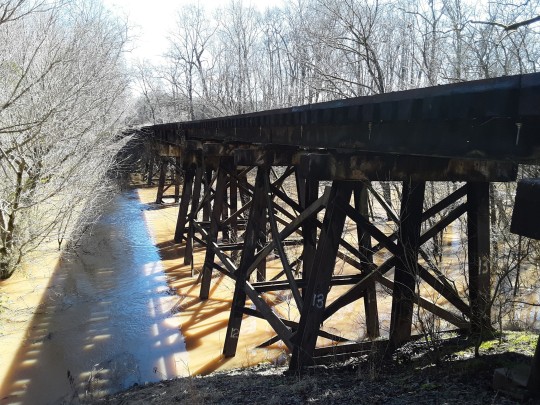


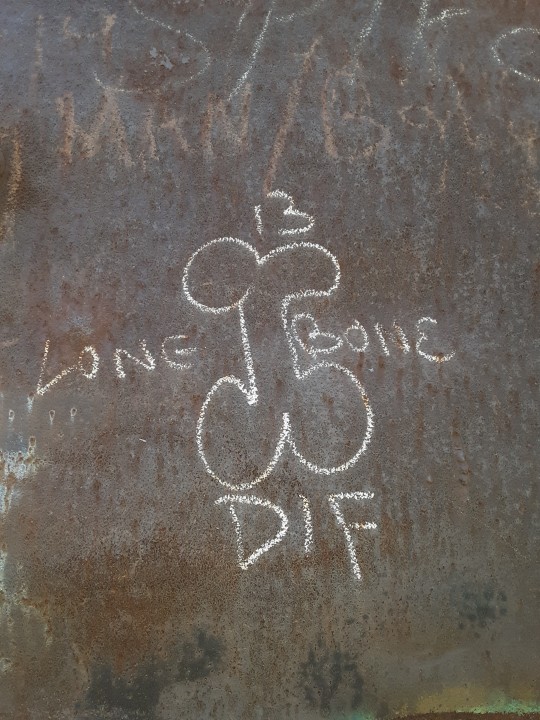


"It was a sad day when Marcher Arrant realized that he couldn't solve all his problems by walking." I found a treasure! I was walking an abandoned track and found some old boxcars living in the middle of nowhere! God I love walking the tracks in the middle of the country, there is this constant sense that that you might find something something special. There is never a moment that things are boring, it's just a constant anticipation of what awaits around the next bend. I could do this forever!
#marcher arrant#graffiti#walking art#walking artist#march graffiti#marcher graffiti#abe lincoln brigade#psychogeography#flaneur#derive
85 notes
·
View notes
Text
L’art primaire

Pendant toute l’année, il entendit que le graffiti n’était pas de l’art. Dans les rues par les passants ou les agents qui le verbalisaient mais aussi à l’école des beaux-arts ou les professeurs, en majorité des artistes frustrés voulaient d’abord modeler des futurs Picasso ou David. Aussi, il ne chercha pas à débattre, laissant les autres avoir raison. Il se contenta de dessiner, de créer, de fabriquer des œuvres telles que ses pairs concevaient l’art. Mais, il était agacé alors il prépara une énorme surprise pour son diplômes de fin d’année et merde s’il n’était pas reçu parce qu’il avait sa propre idée de l’art.
Durant trois mois, il partait en douce travailler son projet dans une cave abandonnée et perdue dans un immeuble de sa cité. Il Passa des nuits entières à se nourrir de mars, de twix et autres barres chocolatés sans vrai chocolat. Il dépensa une fortune à acheter des pots de peinture mais au final, il était heureux de son chef-d’œuvre.
Le jour de l’examen, le jury accepta sa requête de se déplacer car son travail ne pouvait bouger. Un des maitres d’art était venu car il entendit des échos sur cette œuvre révolutionnaire. Tout le monde fut inquiet d’entrer dans une banlieue réputée pour ses trafics en tous genres ainsi que pour la loi imposé par une petite mafia locale. Cependant, ils pénétrèrent le coupe-gorge sans aucun problème, suivant l’étudiant dont un sourire immense marquait son visage. Ils furent surpris d’entrer dans un immeuble et descendirent les escaliers. Le couloir était étroit obligeant les juges à marcher en file indienne. Il régnait une odeur nauséabonde de pisse, d’animal mort, la laine de verre visible au plafond accentuait ce sentiment d’étouffer. Enfin, l’élève s’arrêta devant une porte, l’ouvrit et invita le jury à entrer.
L’un d’eux soupira pour accepter ce qu’il vit. Sur le mur de face, une œuvre peinte au pistolet, représentait des dessins similaires à ceux de Lascau. On put reconnaitre des animaux préhistoriques, des mammouths, des aurochs, des cerfs, des chevaux pourchassés par des hommes tenant lances et arcs. D’autres scènes plus communes proposa dans le tableau des jeunes danser autours d’un feu ; quelques mains furent adossées sur le mur tels que le faisait nos ancêtres. A leur gauche, les professeurs purent contempler des personnages romains hommes et femmes, dessinés à l’identique des fresques retrouvées à Pompéi. Quelques gladiateurs combattaient et dessous on put lire des graffitis en latin : « Eponia amat Maximus» « Antonium non loqui, quia sugit » « Quo Vadis ? » « Vae Victis »…
Sur le troisième mur, ils admirèrent une troisième fresque racontant la vie du quartier. Les gens de l’immeuble acceptèrent de participer pour faire plaisir à ce petit jeune sérieux et poli, aussi pour laisser une trace dans ce quartier lugubre. Tous sans exceptions de la petite vieille du troisième au dealer de shit en passant par une fille paumée qu’il rencontra avant de partir en cours. Tous furent dessinés les uns à côté des autres avec en fond, l’immeuble. Les professeurs remarquèrent aussi au sol des ouvrages artisanaux. Il avait fabriqué des silex taillés, une statuette d’une déesse primitive, une poterie, un cendrier représentant une main d’enfant. Il avait cassé de la porcelaine, une poterie et il déposa quelques objets sans intérêt comme une cafetière en panne. Un des professeurs applaudit le culot de son travail. Le jury discuta entre eux, ils réalisèrent que finalement l’art primaire commença par des graffitis dans une grotte. Son travail n’était qu’une évolution de l’art tout comme les fresques murales pendant l’antiquité, tout comme leur vision. Il fut reçu, major de sa promotion.
Juste avant de partir, il remercia les enseignants de s’être déplacés, puis avec un ami, il cimentèrent des briques à la place de la porte emmurant ainsi la cave. Les profs furent étonnés de cette décision mais ils ne virent pas son petit message tagué sur cette nouvelle porte : « A casser seulement dans cent ans ».
Alex@r60 – août 2019
Tableau : les aquarelles grandeur nature de Joachim Lutz pour Leo Frobenius, 1929, relevés des parois de Mutoko, Zimbabwe
Photo prise à l’exposition « Préhistoire, une énigme moderne » Centre Pompidou
15 notes
·
View notes